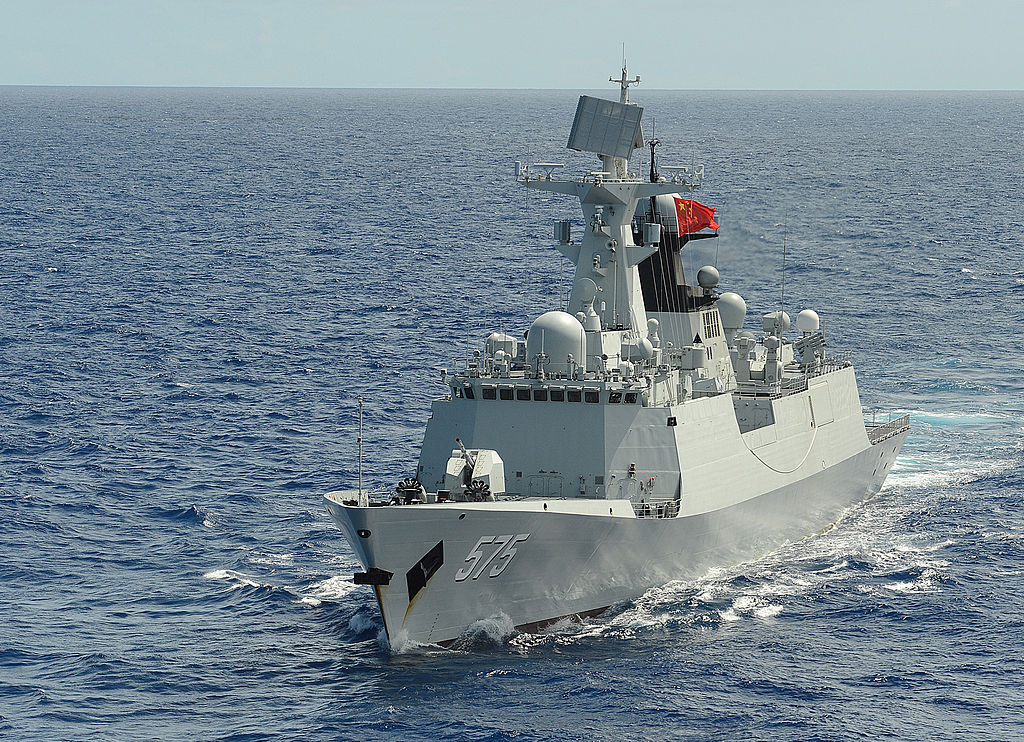A Chinese giant crane vessel came close to the Vietnamese coastline on Tuesday (Sept, 4). it is an area claimed by Vietnam as its exclusive economic zone.
The Lan Jing, believed to be the largest crane ship in the world entered the Vietnamese territory on Tuesday night, according to news reports and Marine Traffic.
This is yet another attempt by China to disturb Vietnam’s territorial integrity with a tactic that is causing more harm than good to peace in the South China Sea.
This is not the first time in the past three months that China ‘teased’ Vietnam with the intrusion of vessels in the country’s EEZ.
On August 24, a Chinese survey ship moved closer to the Vietnamese coast right after the Vietnamese prime minister and his Australian counterpart expressed concern about China’s activities in the disputed waters.
The Haiyang Dizhi 8 vessel first entered Vietnam’s exclusive economic zone (EEZ) early July, where it began a week-long seismic survey, says the South China Morning Post.
This triggered a tense stand-off between military and coastguard vessels from Vietnam and China.
The Lan Jing which came 90km (56 miles) from the Vietnamese coastline further fuelled the risk of a maritime confrontation between Vietnam and China.
In a repeat of the July stand-off, regional and international leaders and observers were quick to respond to the presence of the Chinese vessels in Vietnamese waters.
From Brussels, the European Union condemned China’s actions
A spokesperson says, “Unilateral actions during the past weeks in the South China Sea have resulted in mounting tensions and a deterioration of the maritime security environment which represents a serious threat to the peaceful economic development of the region.
“It is crucial for all parties in the region to exercise self-restraint, take concrete steps towards reverting to the status quo ante, refrain from militarizing the region and resolve disputes through peaceful means in accordance with international law, notably the United Nations Convention on the Law of the Sea (UNCLOS).”
The EU urges the parties to seek third-party assistance in the form of mediation or arbitration to facilitate the settlement of their respective claims if deemed useful.
“The EU will continue to ‘fully’ support regional Asean-led processes, in order to further promote a rule-based regional and international order, to consolidate multilateral cooperation, as well as closer cooperation with third parties. We are looking forward to a swift conclusion, in a transparent manner, of the talks on an effective, substantive and legally binding Code of Conduct.”
The EU also says it is committed to the legal order for the seas and oceans based upon international law, maritime security and cooperation, as well as the freedom of navigation and overflight, in the interest of all states.
On the other hand, the International Association of Democratic Lawyers (IADL) says the recent provocative escalations of tensions in the South China Sea negatively affects the maritime security and safety in the region.
These escalations should be of great concern to the international community, it says.
It listed a number of intrusions by Chinese vessels in the disputed seas, including in April with the increased presence of Chinese ships around Thi Tu island – a disputed area with the Philippines, in May when China’s coastguard vessels were patrolling around the Luconia Shoals, which lies within the EEZ of Malaysia.
It also says in July China let oil survey vessel Haiyang Dizhi 8 and its escorts operate illegally in the EEZ and continental shelf of Vietnam in the South of South China Sea.
“This act has clearly violated the sovereignty, sovereign rights and jurisdiction of Vietnam as stated in UNCLOS 1982.”
IADL requests that China promptly stop violating the sovereignty, sovereign rights and jurisdiction of Vietnam, stop carrying out activities that further complicate the situation and increase tension between related parties and begin to concentrate on building mutual trust to maintain the security, peace and stability in the South China Sea in particular and in the region in general.
It also says all parties should respect and adhere to the Declaration of Code of Conduct in the South China Sea (DOC) as well as establish and implement the Code of Conduct (COC).
These are to be legally binding and based on international laws.
“IADL prefers the total demilitarization of the South China Sea region but short of that, IADL emphasizes the importance and necessity of strictly adhering to the international law, especially the UNCLOS 1982, which prohibits the use of force or threat of using force, to maintain freedom of navigation and aviation in the South China Sea.
“IADL urges related parties to resolve disputes by peaceful means based on international laws to preserve peace, stability and security in the region.”
The US, India, the UK, Germany, France, Australia, among others have expressed concerns over China`s bullying tactics.
“China’s actions stand in contrast to the United States’ vision of a free and open Indo-Pacific region, in which all nations, large and small, are secure in their sovereignty, free from coercion, and able to pursue economic growth consistent with accepted international rules and norms,” the Pentagon said in a statement released on August 26.
Australian Prime Minister Scott Morrison during his visit to Hanoi on August 22-24 showed concern about land reclamation and militarization of disputed territories in the SCS.
The concerns are also in relation to long-standing oil and gas projects.
In a joint statement, the Australian PM emphasized the importance of freedom of navigation and overflight, compliance with international law and maintaining a rule-based order. -/TISG

